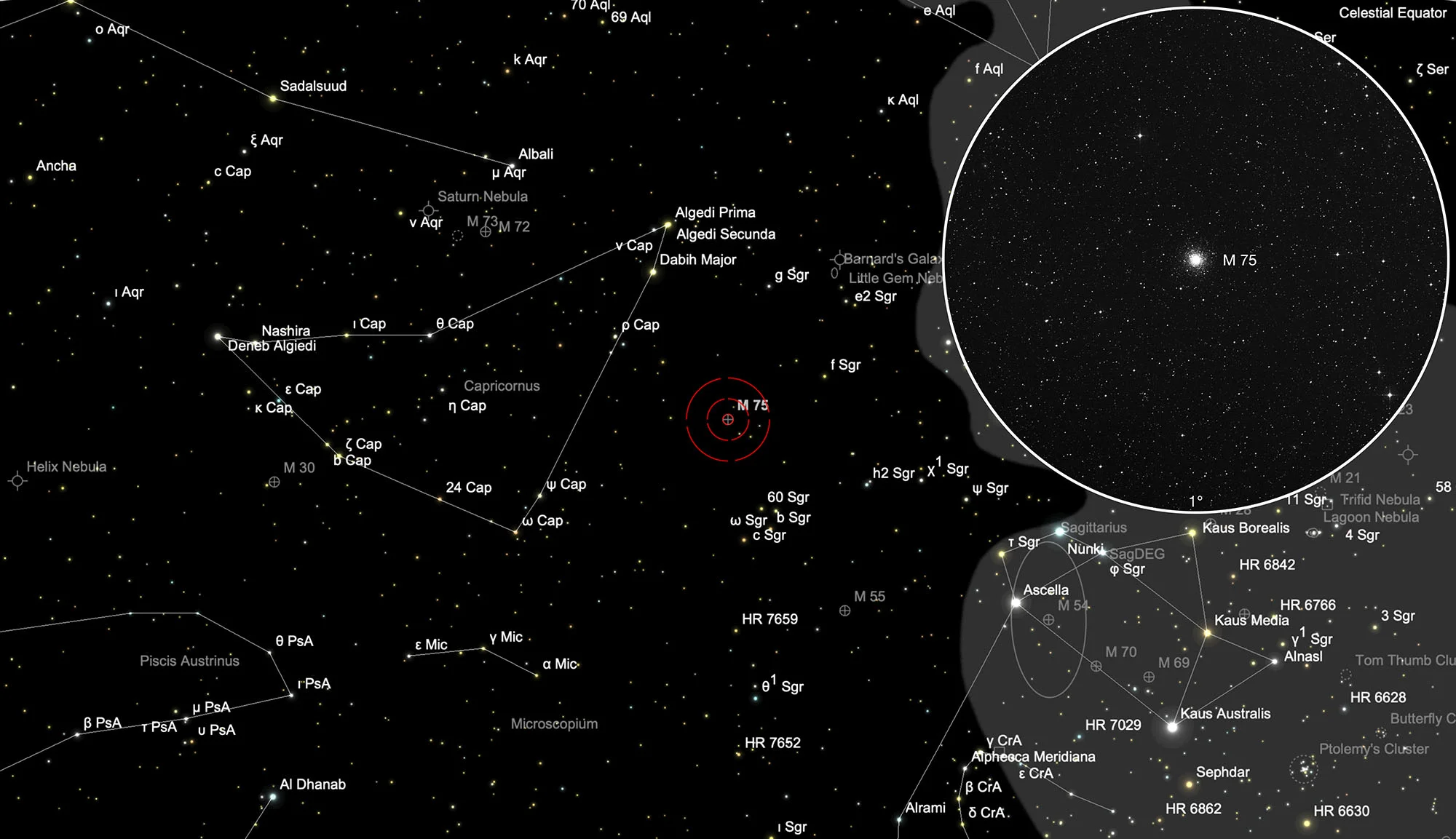Globular Cluster Messier 75

History
M 75 was discovered by French astronomer Pierre Méchain. Charles Messier reported: «A nebula without a star between Sagittarius and Capricorn's head: sighted by M Méchain on August 27th and 28th, 1780. M. Messier looked for him on October 5th and compared him to star no. 4 in Capricorn Flamsteed. It seemed to M. Messier that the nebula consisted only of small stars. M. Méchain reported a nebula without stars. M. Messier saw him on October 5th, but the moon was over the horizon. Only on the 18th could he determine his appearance and location.» [281]
Physical Properties
This globular cluster is of type I and has one of the densest core regions and is estimated to contain around 400'000 stars. Like most globular clusters, it is very old, around 13 billion years old, and is about 67'500 light years away from Earth. [215]
| Designation | NGC 6864 |
| Type | GCL (I) |
| Right Ascension (J2000.0) | 20h 06m 04.8s |
| Declination (J2000.0) | -21° 55' 15" |
| Diameter | 6.8 arcmin |
| Visual magnitude | 8.6 mag |
| Metric Distance | 20.900 kpc |
| Dreyer Description | globular, B, pL, R, vmbMBN, rr |
| Identification, Remarks | h 2064; GC 4543; M 75; GCL 116; ESO 595-SC13 |
Finder Chart
M 75 lies in a rather star-poor region between the figures of the constellations Sagittarius and Capricornus. The star 4 Capricorni is 5.8 mag bright and barely visible to the eye. The globular cluster lies 2° 45' west of it at almost the same declination.
Visual Observation
762 mm Aperture: The globular cluster M75 is small and densely packed with bright stars at its centre, while at higher magnification, the outer regions become resolvable. — 30" f/3.3 SlipStream Dobsonian, Hasliberg, 9. 8. 2024, SQM 21.33, Eduard von Bergen
